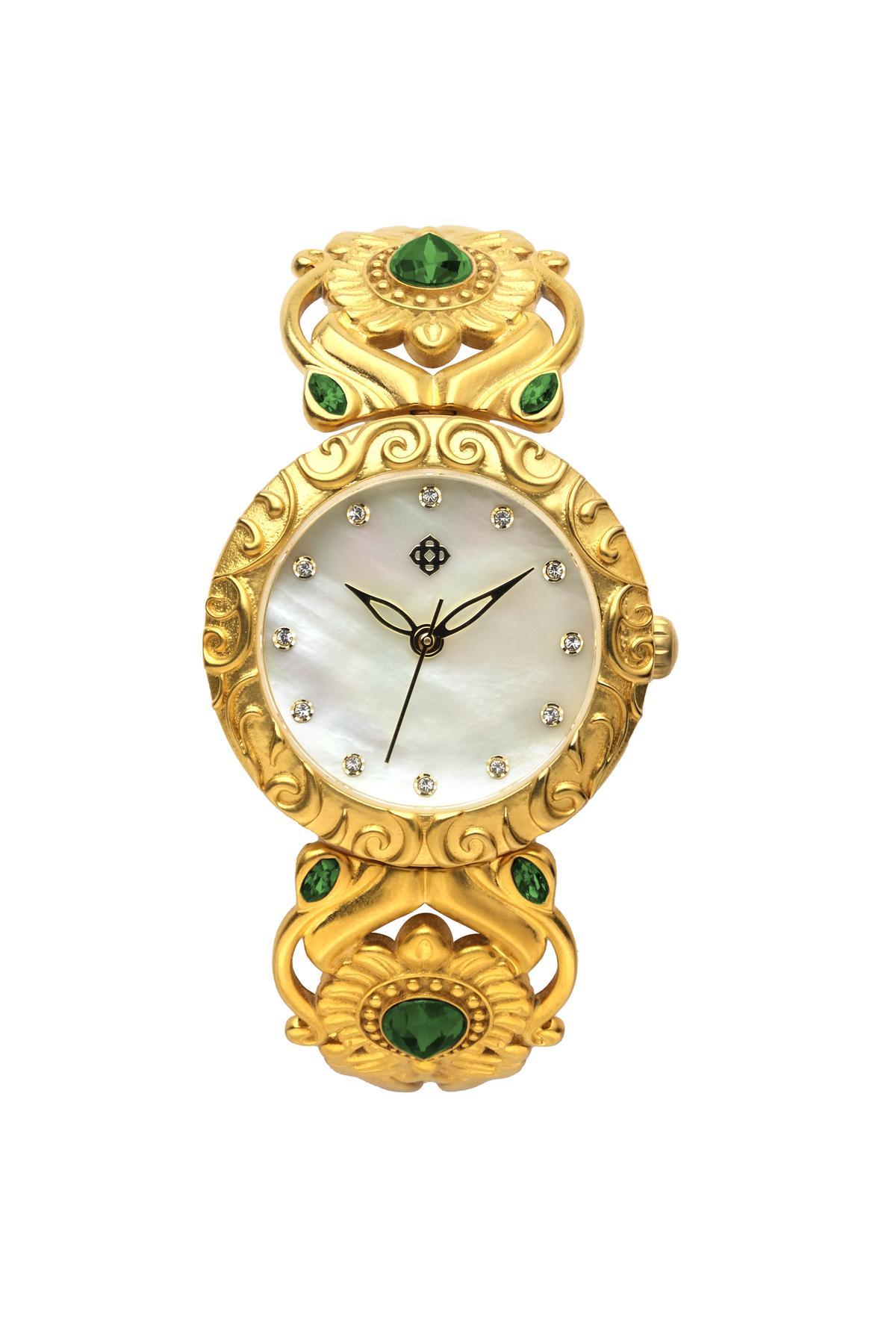As we walk into Gaurav Mehta’s store in Jaipur, located within the Rambagh Palace, Jaipur, we expect a large, swanky setting befitting the founder-designer of Jaipur Watch Company (JWC) and his latest collection, Brides of Jaipur. But it is an intimate space (less than 100 sq ft) without any external branding, tucked into a corner of the sprawling early 20th-Century palace, now operated as a five-star hotel by the Taj Hotels Group.
It evoked the charm of the small, family-run shops nestled in the bazaars of traditional Jaipur. Rambagh Palace is, nevertheless, a prime location for Gaurav’s clientele. Those who can afford ₹3 lakh per night for accommodation will likely buy a ₹30,000 wristwatch (the starting price of watches in the Brides of Jaipur edit). This is perhaps why, despite having other stores, he secured the space within a few hours after the previous tenants vacated. “Time is luxury,” says Gaurav as we sit across the table, discussing his latest collection.
Brides of Jaipur draws inspiration from the intricate jaali work found in Jaipur’s iconic City Palace. While the collection’s name suggests bridal wear, Gaurav explains that Brides of Jaipur is for any woman who appreciates traditional Indian attire. “Weddings are only one occasion; India has countless festivals where traditional wear is celebrated,” he says. “We called it ‘Brides’ because the bride is always the focus of attention, but the watches are designed for all women who embrace their culture.”
Gaurav’s fascination with watchmaking stretches back to childhood. As a boy, he was intrigued by the mechanical precision of hand-wound watches. His first watch, a gift from his grandfather on a trip to Switzerland, ignited this passion. But it was a simple Indiglo watch, purchased with his mother, that cemented his love for watches.
Malaiaka Arora wearing a Brides of Jaipur watch
| Photo Credit:
Special Arrangement
Keepers of culture
JWC’s watches often reflect history and culture. “India has a wealth of mythology and history that many people don’t know enough about,” says Gaurav. “I want to promote Indian culture through various mediums, be it stamps, coins, or watches.” He sees the preservation of history as a key function of his watches, which he likens to artefacts that connect wearers to their heritage. “Watches can tell stories, just like old coins or stamps evoke nostalgia and cultural memories.”
The watch on his wrist is from another recent JWC collection, the Rajasthan Polo Edition, which pays tribute to the sport’s heritage. Crafted with stone dials — tiger eye, malachite, lapis lazuli, and aventurine — the watch also offers a customisable back. “Polo players can have the back engraved with text or images and wear the watch face inward during matches to avoid damage,” he says.
Polo has a rich history in India, particularly in Rajasthan, where it evolved from a royal pastime to an internationally celebrated sport. Introduced by the Mughal emperors, the game was later adopted by Rajput kings, who embraced it as a symbol of valour and prestige. Jaipur, with its royal heritage, became a significant center for polo under Maharaja Sawai Man Singh, who was an avid player and helped popularise the sport both within India and abroad. Today, the city is home to some of the most prestigious polo tournaments, keeping the legacy of Rajasthan’s equestrian culture alive.
Relationship with time
A watchmaker, perhaps more than anyone, is intricately connected to the concept of time, shaping devices that mark its passage. Asked if he sees time as rigid or fluid, Gaurav replies after a pregnant pause, “Time is a friend to me; it’s essential for discipline, but I don’t like being constantly tracked by technology,” he says. This paradox — reverence for time yet a desire to escape its grasp — finds expression in his watch designs, which often blend tradition with modernity, offering wearers a momentary escape from the rush of daily life.

A timepiece from the Brides of Jaipur collection
| Photo Credit:
Special Arrangement
Gaurav also dreams of travelling back to the past. He wishes to visit the 1940s, a period he views as a time of rebirth for India. He regrets not meeting Gérald Genta, the legendary watch designer whose retrograde jump hour design he deeply admires. “I wish I could have suggested a polo theme to him,” he muses, imagining a creative collaboration with the Swiss designer. He also cherishes a watch passed down from his paternal grandfather, a Waltham piece from the 1930s that he painstakingly restored. “It took six months to find the right movement and hands,” he says, recalling the process of bringing the watch back to life.
“Watches to me are more than just tools for timekeeping,” he says. “They are carriers of memories, symbols of history, and, sometimes, just a way to start a conversation.”
The writer was in Jaipur on the invitation of Jaipur Watch Company.
Published – October 21, 2024 12:24 pm IST

